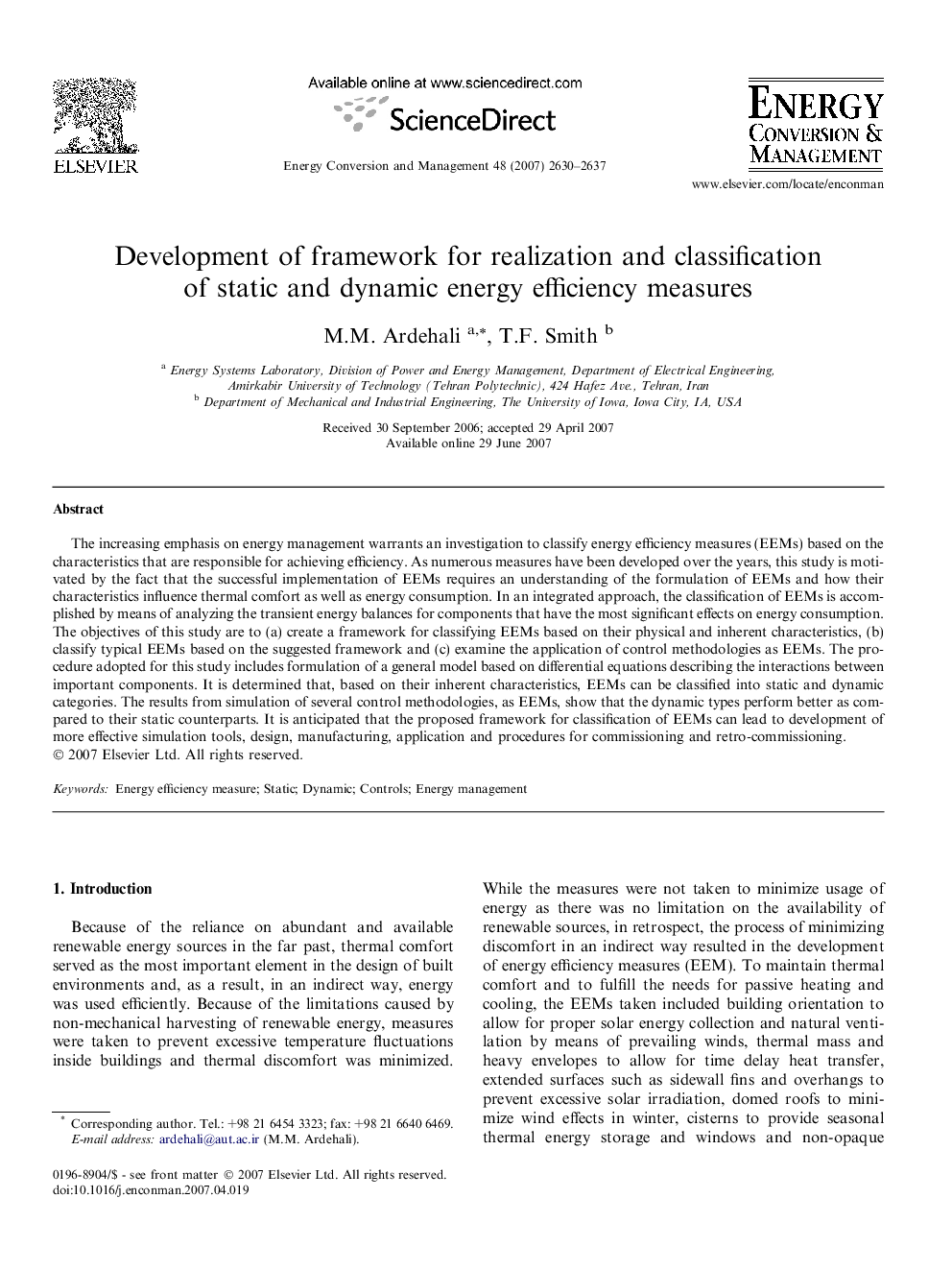| Article ID | Journal | Published Year | Pages | File Type |
|---|---|---|---|---|
| 762114 | Energy Conversion and Management | 2007 | 8 Pages |
The increasing emphasis on energy management warrants an investigation to classify energy efficiency measures (EEMs) based on the characteristics that are responsible for achieving efficiency. As numerous measures have been developed over the years, this study is motivated by the fact that the successful implementation of EEMs requires an understanding of the formulation of EEMs and how their characteristics influence thermal comfort as well as energy consumption. In an integrated approach, the classification of EEMs is accomplished by means of analyzing the transient energy balances for components that have the most significant effects on energy consumption. The objectives of this study are to (a) create a framework for classifying EEMs based on their physical and inherent characteristics, (b) classify typical EEMs based on the suggested framework and (c) examine the application of control methodologies as EEMs. The procedure adopted for this study includes formulation of a general model based on differential equations describing the interactions between important components. It is determined that, based on their inherent characteristics, EEMs can be classified into static and dynamic categories. The results from simulation of several control methodologies, as EEMs, show that the dynamic types perform better as compared to their static counterparts. It is anticipated that the proposed framework for classification of EEMs can lead to development of more effective simulation tools, design, manufacturing, application and procedures for commissioning and retro-commissioning.
